Around 40% of the green tea produced in Japan is grown in Shizuoka Prefecture, making it the largest producer of green tea in the country. There are a great many tea fields located on the outskirts of Shizuoka City, the capital of Shizuoka Prefecture. One of the best ways to visit one of these nearby tea farms is on a guided bike tour from Shizuoka Station in the center of the city. On a bike tour you can see the beautiful tea fields up close before sampling a selection of delicious locally grown green teas.
Table of Contents
Cycling to a Green Tea Farm – The Practicalities

The cycle tour to Moriuchi Tea Farm on the outskirts of Shizuoka starts and ends outside Shizuoka Station. Led by a knowledgeable tour guide, the bike ride from Shizuoka Station to Moriuchi Tea Farm takes around an hour, cycling at a gentle pace.
The bicycles are modern hybrid bikes, which are a cross between road and mountain bikes. Light and easy to ride, the bikes are perfect for cycling through the streets of Shizuoka and alongside the tea farms located towards the outskirts of the city. A range of different sized bikes are available depending on your height, and helmets are also provided.
If you’re nervous about cycling on Japan’s roads or sidewalks there is really nothing to fear. Cycling in Japan is incredibly common and one of the most popular modes of transport. Cyclists are respected by drivers and pedestrians alike, so as long as you exercise due care and pay attention then there is no need to worry. Almost all of the journey is flat and the tour guide will be happy to go at a pace that suits you and stop for breaks whenever needed.
Reaching Shizuoka’s Tea Fields by Bike
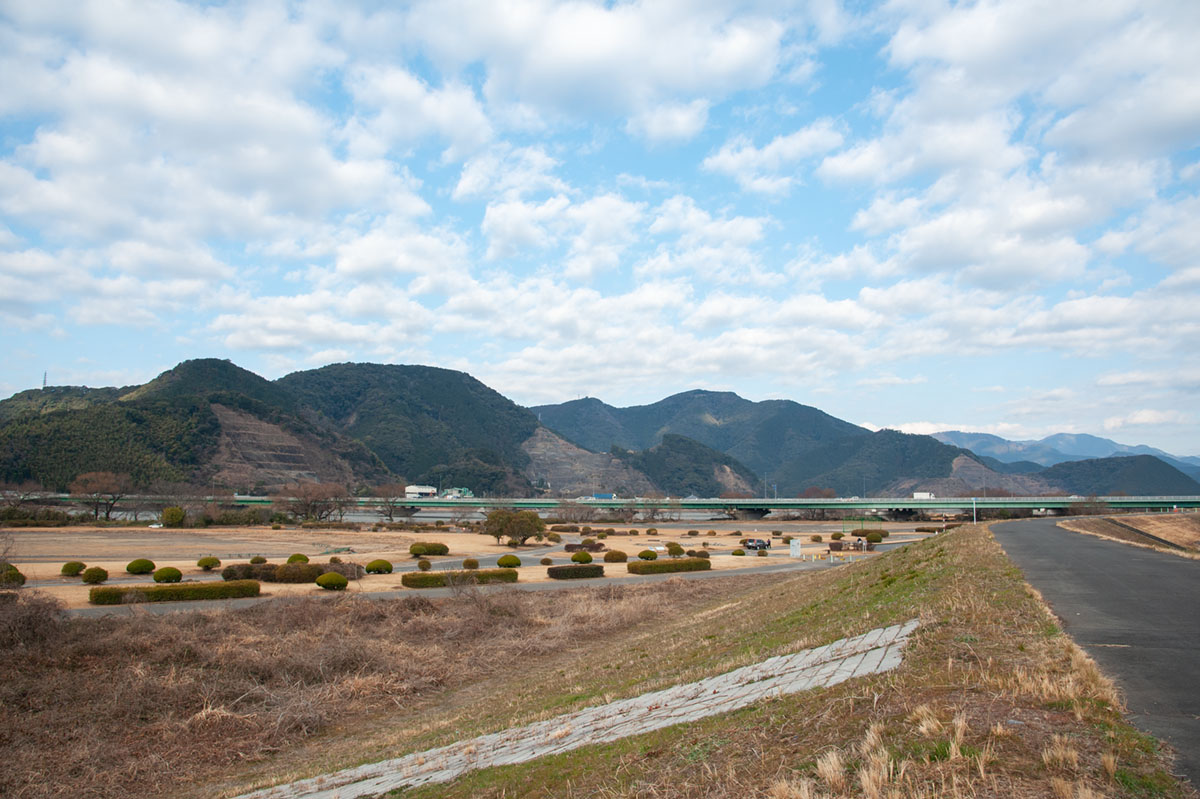
From Shizuoka Station the tour passes through the bustling streets of Shizuoka’s city center. Heading north, it doesn’t take long to reach the Abe River near the outskirts of the city, thanks largely to the city’s easy to navigate grid system and flat terrain. Over 30 miles long, the Abe River begins deep in Shizuoka Prefecture near the mountains that form Japan’s Southern Alps.
The view as you cycle along the bending river is framed by the foothills of the Southern Alps that wrap around the city. If the weather is clear you might just spot the unmistakable tip of Mount Fuji to the east.
The view along the banks of the Abe River is beautiful all year round, but is particularly special in the spring, when the riverbank’s azaleas burst into color.
Arriving at Moriuchi’s Beautiful Tea Plantations

The tour continues by crossing the Abe River via the Kano Bridge. It’s on the west side of the river that you suddenly find yourself in a much more rural setting, where the first rows of neatly arranged tea fields appear. From here it’s just a few more minutes’ until you find yourself amongst some of the most picturesque natural scenery in Japan, surrounded by breathtaking green tea plantations that sweep across the rolling hillsides.
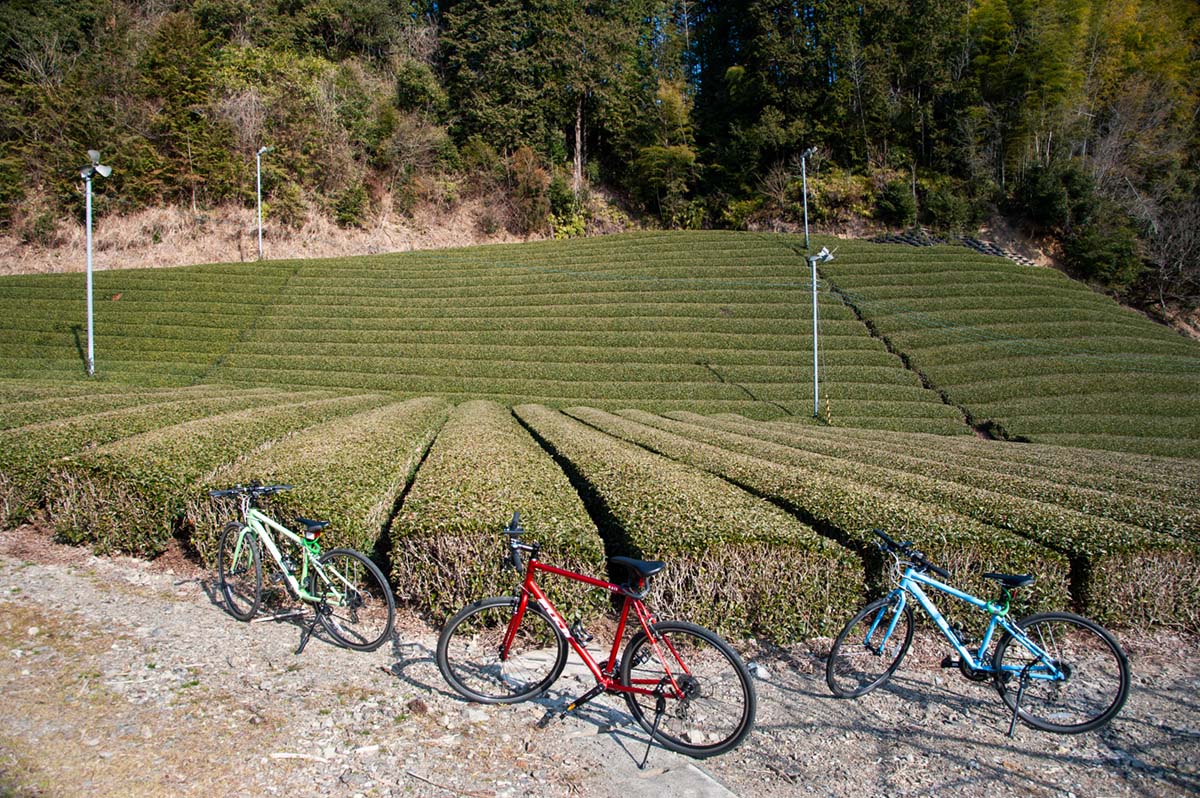
Here, you can jump off the bike and take a walk amongst the carefully-tended tea fields. A truly mesmerizing sight, these are amongst some of the most spectacular and picturesque tea fields in Japan. After arriving at the tea plantations, the tour guide explains about the methods used in Japan for green tea cultivation. You will also learn about the long history of green tea in Japan, from its introduction from China over 1,000 years ago to how the Japanese developed green tea to become an essential part of their culture.
A Masterclass in How to Enjoy Shizuoka’s Finest Green Teas
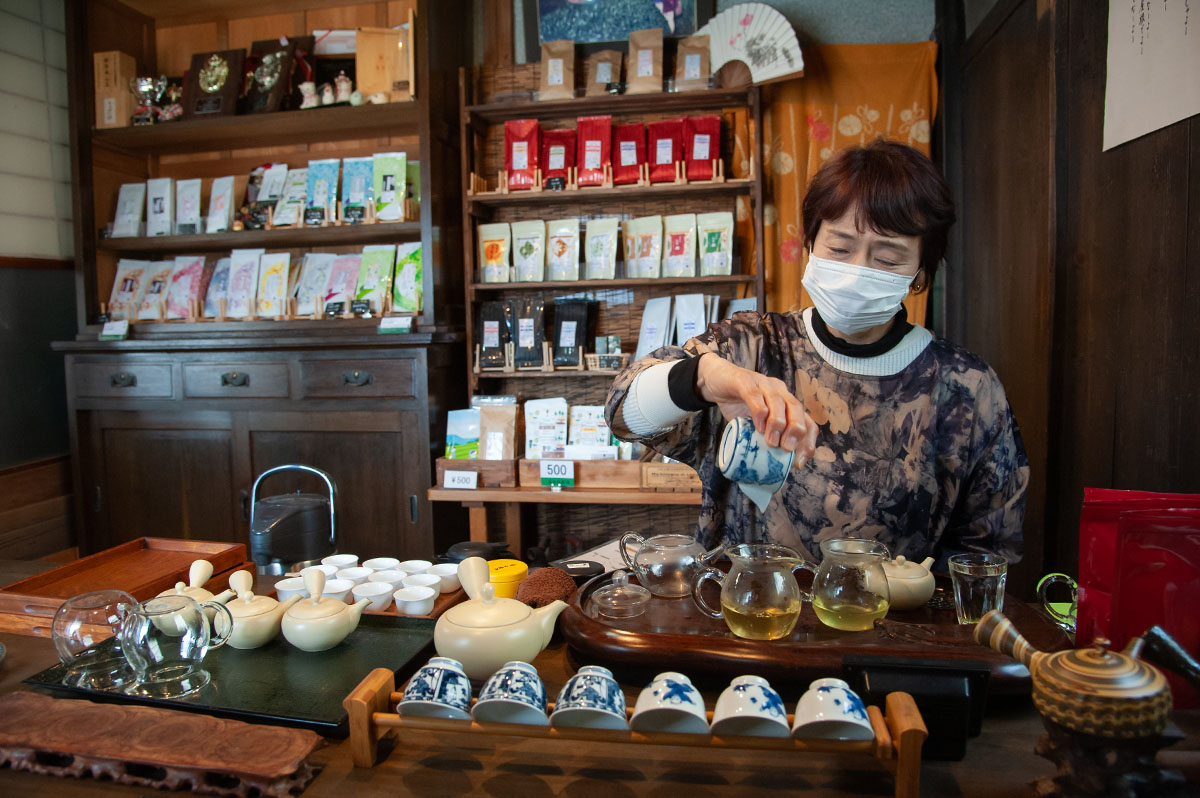
From the tea plantations, it’s just a few minutes further on the bike to the Moriuchi Tea Farm. Inside a beautiful traditional Japanese home that forms part of the tea farm’s estate, you’ll get to sample a selection of the tea leaves grown in the nearby fields. The teas produced by the Moriuchi Tea Farm are known for being of the highest quality. Many of their teas are exported to customers all over the world. Moriuchi’s black tea is even served at afternoon tea in Claridges Hotel in London.

Prepared and poured by one of the local expert tea farmers, there’s no better way to explore the richness and complexity of Japanese green tea. As part of the tasting, you’ll discover the variety of techniques that are used to process green tea leaves to create different types of Japanese teas. Treating the same tea leaves in different ways can result in a huge variety of different types of green tea. For example, in order to make sencha, green tea leaves are steamed after they are picked, and the same leaves can be fermented to produce oolong tea.

During the tasting you will also learn how different flavors are created from just a single type of tea leaf. A number of factors can affect the taste of the final cup of tea, from the temperature of the water used to brew the tea to the amount of time the leaves are brewed. You’ll also see how the same leaves can be used more than once and how a second or third pouring of the same tea leaves can bring out a much different taste in the final cup of tea.
Exploring the Shizuoka Sengen Jinja Shrine
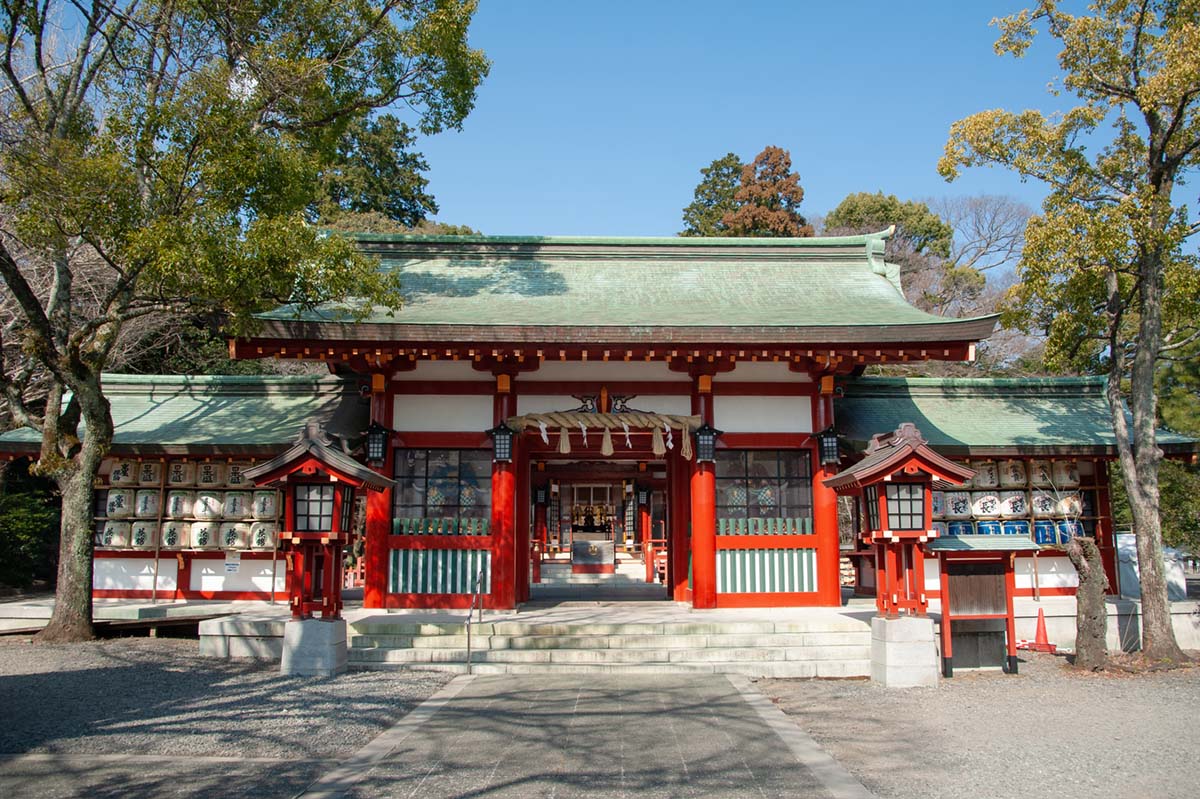
After tasting some of the finest green teas in Shizuoka, it’s time to return back to the city center. The return journey follows a slightly different route, taking a detour to Shizuoka Sengen Jinja Shrine, located in the center of the city. In fact, Shizuoka Sengen Jinja Shrine houses a collection of seven Shinto shrines, the oldest of which, Kambe Shrine, can trace its history back to over 2,000 years.
Shizuoka Sengen Jinja Shrine is closely associated with Ieyasu Tokugawa, the revered shogun who united Japan in the 16th Century. Ieyasu Tokugawa lived in Shizuoka for many years and it was at Shizuoka Sengen Jinja Shrine that his coming of age ceremony was held. Today, most of the buildings within Shizuoka Sengen Jinja Shrine date from the Edo Period, with the whole complex featuring a number of incredibly impressive buildings. Over 20 of Shizuoka Sengen Jinja Shrine’s buildings have been designated as National Important Cultural Properties by the Japanese government.
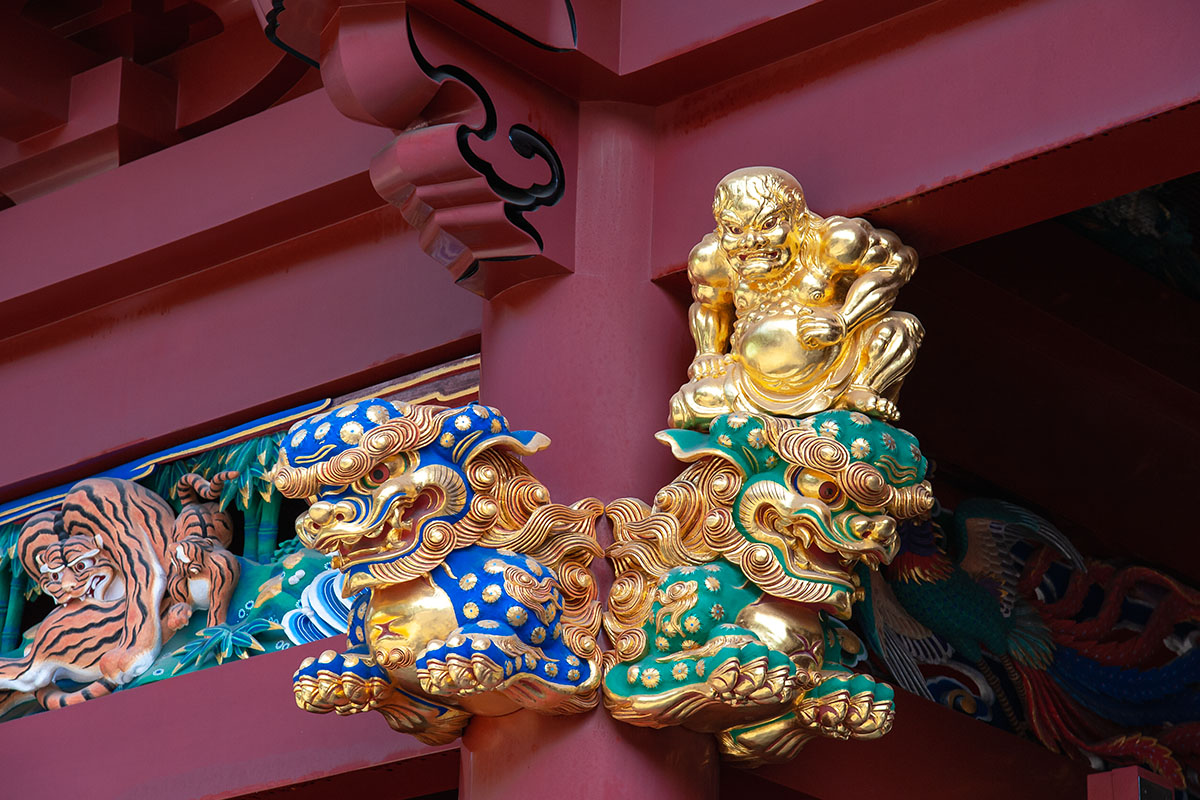
The shrine’s main halls and entrance gates are each adorned with beautifully intricate details and embellishments, including colorful hand-carved tigers and golden ogres riding on the back of mythical lion dogs. Numerous deities are enshrined in each of the seven shrines located inside the Shizuoka Sengen Jinja Shrine complex. Worshippers come to the Shrine to offer prayers to the deities in the hope of receiving good fortune in business, success at work, to pass exams or to find love.
Ending the Tour Back at Shizuoka Station
From Shizuoka Sengen Jinja Shrine, it’s a short cycle along the picturesque Sengen Dori and past Sumpu Castle Park back to Shizuoka Station in the center of the city. The whole tour lasts approximately four hours, during which you’ll see stunning natural landscapes, enjoy countless cups of Japan’s finest green tea and explore Shizuoka’s most important and historic shrine.
How to Book a Bicycle Tour to a Shizuoka Green Tea Farm
You can book your very own bike tour to a green tea farm through Visit Shizuoka. Click here for more information and also to book your own bicycle tour by completing the booking form at the bottom of the page.
How to Get to Shizuoka’s Green Tea Farm
The bicycle tour to the green tea farm begins at the north exit of Shizuoka JR Station. From here, the tour guide will lead the way for the entirety of the ride, from Shizuoka Station to the Abe River, on to the Moriuchi tea farm and then to Shizuoka Sengen Jinja Shrine. After visiting Shizuoka Sengen Jinja Shrine, the guide will lead you back to Shizuoka Station where the tour ends.
